The Adventures of Mark Twain

Brief Synopsis
Cast & Crew
Irving Rapper
Fredric March
Alexis Smith
Donald Crisp
Alan Hale
C. Aubrey Smith
Film Details
Technical Specs

Synopsis
On November 30, 1835, the night that Halley's Comet is visible over the Mississippi River town of Hannibal, Missouri, Samuel Clemens is born. As a boy, Sam plays on Jackson Island with his friends, Tom Sawyer, Huckleberry Finn and their black slave boy, Jim. Sam loves the river and the steamboats that travel on it so much that despite the wishes of his widowed mother, he runs away from his job as a printer's apprentice and hires on a riverboat. After several years of practice, Sam becomes a good river pilot. One night, Sam stops a pickpocket from robbing Charles Langdon, and the two young men become friends. Sam is particularly struck by the portrait of Charles' pretty sister Olivia and announces that he intends to marry her. To that end, Sam quits the river and accompanies his friend, Steve Gillis, West, where they plan to make their fortunes in the silver rush. The two men have no luck at their claim, however, so when a local newspaper reporter is shot, Sam takes over his position. One day, Bret Harte challenges all comers to a jumping frog contest at Angel's Camp. Steve is determined to win and convinces Sam to bet all their money on the contest. After Bret's frog loses because Steve had earlier filled it full of buckshot, Sam confesses that he bet all their money on Bret's frog, and the two men hurriedly call for a rematch. Later, Sam writes up the story, using "Mark Twain," the boatman's cry for safe water, as his pseudonym.
When the Civil War starts, Sam enlists on the side of the South. In the meantime, his story is published in a newspaper, and the publisher, Oxford Chancellor, offers the writer a lecture engagement. In the audience are Charles and his sister Livy. After Sam's successful lecture, many famous and influential people come backstage to meet him, but he has eyes only for Livy. Charles and Livy invite Sam home, but their stern New England father Jervis does not like the rough young man, and orders him to leave. Sam pretends to be injured so that he can stay near Livy, and soon the two are engaged to be married. Rather than fight against his daughter's marriage, Jervis buys her a nearby home as a wedding present. Quickly, Sam writes several successful humorous books, but when his young son dies, Sam is so heartbroken that he stops writing. Livy convinces him to write the story of his beloved Mississippi as he would have wanted to tell it to their son, and Sam writes The Adventures of Tom Sawyer . After Sam insults the New England writers at a dinner in honor of John Greenleaf Whittier, he writes Huckleberry Finn to redeem himself in Livy's eyes. Sam now wants to write a serious book, but various moneymaking schemes exhaust his finances, and he must continue to write his successful humorous works.
Finally, after the publishing company that Sam owns publishes the memoirs of Ulysses S. Grant, and Sam gives all the profits to Grant's widow, the Clemenses face bankruptcy. To raise money, Sam leaves his three daughters and ailing wife, and goes on a world-wide lecture tour. Sam finally pays off his debts and rejoins Livy in Florence, Italy. They then learn that he is to be awarded an honorary degree by Oxford University. Livy makes Sam promise to go to Oxford even if she cannot accompany him, and after she dies, he keeps his promise. Sam, now cared for by his eldest daughter, accrues more honors. On his seventy-fifth birthday, Halley's Comet returns, and Sam dies, as he was born, accompanied by the comet.

Director

Irving Rapper
Cast

Fredric March

Alexis Smith
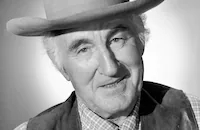
Donald Crisp

Alan Hale

C. Aubrey Smith

John Carradine
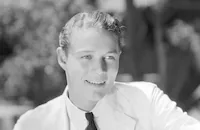
Bill Henry

Robert Barrat

Walter Hampden

Joyce Reynolds
Whitford Kane
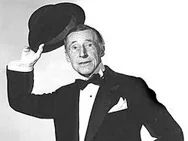
Percy Kilbride

Nana Bryant
Dennis Donnelly
Hooper Atchley
Frank Wilcox
Jackie Brown

Dickie Jones

Kay Johnson
Eugene Holland
Michael Miller
Frederick Spencer
Russell Gleason

Christian Rub
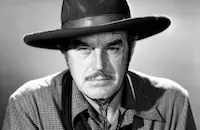
Harry Woods
Victor Kilian
Eddie Waller
Earle Dewey
Ice Powell
Sammy Mckim
Harry Worth
Lee "lasses" White
Ernie Adams
William Gould
Arthur Aylsworth

Jack Mower
Frank Mayo
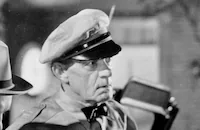
Lew Kelly

Paul Panzer
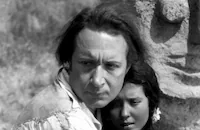
Monte Blue
Paul Newlan
Ernest Whitman
Emmett Smith
Pat O'malley
Frank Pharr
Norman Willis
Dick Elliott
Bud Osborne
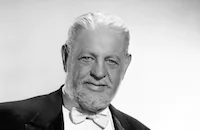
Thurston Hall

Chester Conklin
John "skins" Miller
Willie Fung
Creighton Hale
Fred Kelsey
Oliver Prickett
Leo White

Joseph Crehan
Harry Wyler
Roland Drew
Walter Soderling
Sailor Vincent
Frank Darien
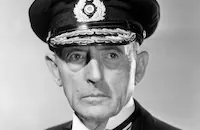
Frank Reicher
Douglas Wood

Willie Best
Burr Caruth
Harry Hilliard

Brandon Hurst
Davison Clark
Harry Holman
Frank Dae
Francis Pierlot

Joseph Crehan
Jessie Grayson
George Lessey
Dorothy Vaughan
Gloria Ann Crawford

Lynne Baggett
Carol Joyce Coombs
Charlene Salerno
Joyce Tucker
Charles Waldron
Paul Scardon

Charles Irwin
Ross Ford
Rosina Galli
George Sherwood
Charles Marsh
Charles Mcavoy
Jim Farley
Cliff Saum
Henry Blair
Bobby Larson

Peter Lawford
Robert Herrick
Charles Peck
Bill Lechner
George Reed
Sam Mcdaniel
Dudley Dickerson
Libby Taylor
Lillian Randolph
Mildred Gover
Richard Kipling
Bill Edwards
William Haade
Bill Kennedy
Stuart Holmes
Jack Gardner
Jack Gargan
Francis Sayles
George Humbert
Robert Homans
George Haywood
Betty Roadman
Viola Callahan
Joan Winfield
Sarah Edwards
Leah Baird
Crew
Lawrence Butler
Harry Chandlee
John Crouse
Herschel Daugherty
Ralph Dawson
Paul Detlefsen
Julius Evans
Leo F. Forbstein
Dwight Franklin
Jesse Hibbs
John Hughes
Al Jermy
Bernard Kaun
Jesse L. Lasky
Alan Le May
Alan Le May
Robert B. Lee
James Leicester
Dick Lemer
Nathan Levinson
Edwin Linden
Fred Maclean
Orry-kelly
Sol Polito
Harold M. Sherman
Don Siegel
Max Steiner
Jack L. Warner
Perc Westmore

Videos
Movie Clip




Trailer
Hosted Intro
Film Details
Technical Specs

Award Nominations
Best Art Direction
Best Score
Best Special Effects
Articles
The Adventures of Mark Twain
It seemed that nobody but Jesse L. Lasky wanted to make The Adventures of Mark Twain. After scoring a hit with another American legend in Sergeant York (1941), he fought for a year to convince Warner Bros. to back a screen biography of the noted writer and humorist. Director Irving Rapper wasn't interested in making the film until he learned that his friend, March, was the first choice to star. March had been suggested by Twain's only living daughter, Clara Clemens Gabrilowitsch, who informed Lasky that she would not help with the picture unless March played her father. But even with such a stirring endorsement, March had his doubts. He only accepted the role after the makeup department shot a test in which he played Twain at 65. When a shot of March in make-up was released to the papers, Twain's daughter thought somebody had discovered another archival photo of her father.
March set out to learn all he could about Twain, a daunting task considering that the studio's research department had assembled a 72 page bibliography on the man, not to mention finding 2,345 photos and conducting interviews with 148 people who had known or observed him. One of those was actor C. Aubrey Smith, who had seen Twain accept an honorary degree at Oxford. In the film, he would play the Oxford chancellor conferring that degree.
March spent 12 weeks working with the make-up department to develop Twain's look for the various ages depicted in the film. Since Twain's nose seemed to change shape over time, they created three different noses for March to wear at different ages. March also pored over the single piece of film on Twain, a 100-foot newsreel. After speaking to many who had known Twain and hearing contradictory accounts of his speech patterns, he put their testimonies together, deciding that he would start speaking slowly until he was sure his listener was following him. Then he would speed up to match the rhythm noted by other witnesses. Years later he would confess to missing one of Twain's mannerisms, his habit of playing with the bottom of his shirtsleeve. He would also praise Hal Holbrook for incorporating that in his award-winning stage performance in Mark Twain Tonight.
Although the film was shot largely on the Warner Bros. back lot, second unit crews captured footage of Twain's hometown, Hannibal, Mo.; the study in his farm in Elmira, N.Y.; and his home in Hartford, Conn. The Mississippi River shown in the film was actually a studio miniature, complete with rotting stumps along the shore and a model version of the paddle wheeler Twain saw destroyed during the Civil War. The special effects department also aided in the dramatization of Twain's story, "The Celebrated Jumping Frog of Calaveras County," and created animated versions of Tom Sawyer and Huckleberry Finn, all of which helped the film score an Oscar® nomination for Best Special Effects.
Although The Adventures of Mark Twain was finished in 1942, it sat on the shelf for almost two years as the studio focused on releasing pictures about World War II while they were still timely. After completing a USO tour, however, March urged Warner's to release the film to military audiences because of its sense of American history. The GIs saw the picture in March 1944, with a theatrical release finally scheduled two months later. Critics lauded March's performance, though they found the film overly episodic as it tried to capture events from several periods of Twain's life. However, over time, the film and March's performance have attracted a devoted following, largely through television presentations.
Producer: Jesse L. Lasky
Director: Irving Rapper
Screenplay: Alan LeMay, Harry Chandlee
Based on an adaptation by Alan LeMay and Harold M. Sherman of biographical material owned by the Mark Twain Co.
Cinematography: Sol Polito
Art Direction: John Hughes, Fred MacLean
Music: Max Steiner
Principal Cast: Fredric March (Samuel Clemens), Alexis Smith (Olivia Langdon), Donald Crisp (J.B. Pond), Alan Hale (Steve Gillis), C. Aubrey Smith (Oxford Chancellor), John Carradine (Bret Harte), Walter Hampden (Jarvis Langdon), Percy Kilbride (Billings), Willie Best (George).
BW-131m. Closed captioning. Descriptive Video.
by Frank Miller

The Adventures of Mark Twain
Quotes
Ladies and gentlemen, William Shakespeare, the greatest author in the English language is dead.....and I feel far from well myself.- Mark Twain
Trivia
The scene where Clemens receives an honorary degree from Oxford University in 1907 was the recreation of an event that C. Aubrey Smith actually witnessed.
Notes
Samuel Clemens was born on November 30, 1835. As in the film, he was born and died during appearances of Halley's Comet. After the death of his father, Clemens was apprenticed to his brother, who ran the Missouri Courier. In 1857, Clemens became an apprentice boat pilot on the Mississippi and remained there until the Civil War. Clemens became a writer after traveling to Nevada in 1861 to work for his brother, a secretary to the territorial governor. He later spent a brief period as an unsuccessful prospector. While working for a San Francisco newspaper, he wrote The Celebrated Jumping Frog of Calaveras County, first published in a New York newspaper, which made him nationally famous. He spent some years traveling abroad, wrote Innocents Abroad based on his travels, and through the book met Olivia Langdon. They were married in 1870. The Clemenses lived in Hartford, CN until 1891. Clemens lost money backing an impractical typesetting machine and investing in a publishing house. He paid his debts by means of a worldwide lecture tour, during which his daughter Susie died. He received many honors and died on 21 April 1910.
Onscreen credits include the following statement: "All biographical material based on works owned or controlled by the Mark Twain Company and the play 'Mark Twain' by Harold M. Sherman." Production information on the play has not been found. The film was completed two years before its release. According to a April 21, 1944 article in Tidings, it was held back because Warner Bros. gave precedence to more topical, war-related films. Hollywood Reporter news items add the following information about the production: Olivia De Havilland was first announced in the role of "Livy." After De Havilland was suspended for turning down a role in Warner Bros.' The Princess O'Rourke," she was replaced in this picture by Alexis Smith. Some scenes were shot on location in Sacramento, CA. The film received several Academy Award nominations: John Hughes was nominated for Best Art Direction; Fred MacLean for Best Interior Decoration; Max Steiner for Best Score; Paul Detlefsen and John Crouse Best Photographic Special Effects; and Nathan Levinson for Best Sound Effects.

Miscellaneous Notes
Released in United States Summer July 22, 1944
Released in United States Summer July 22, 1944















